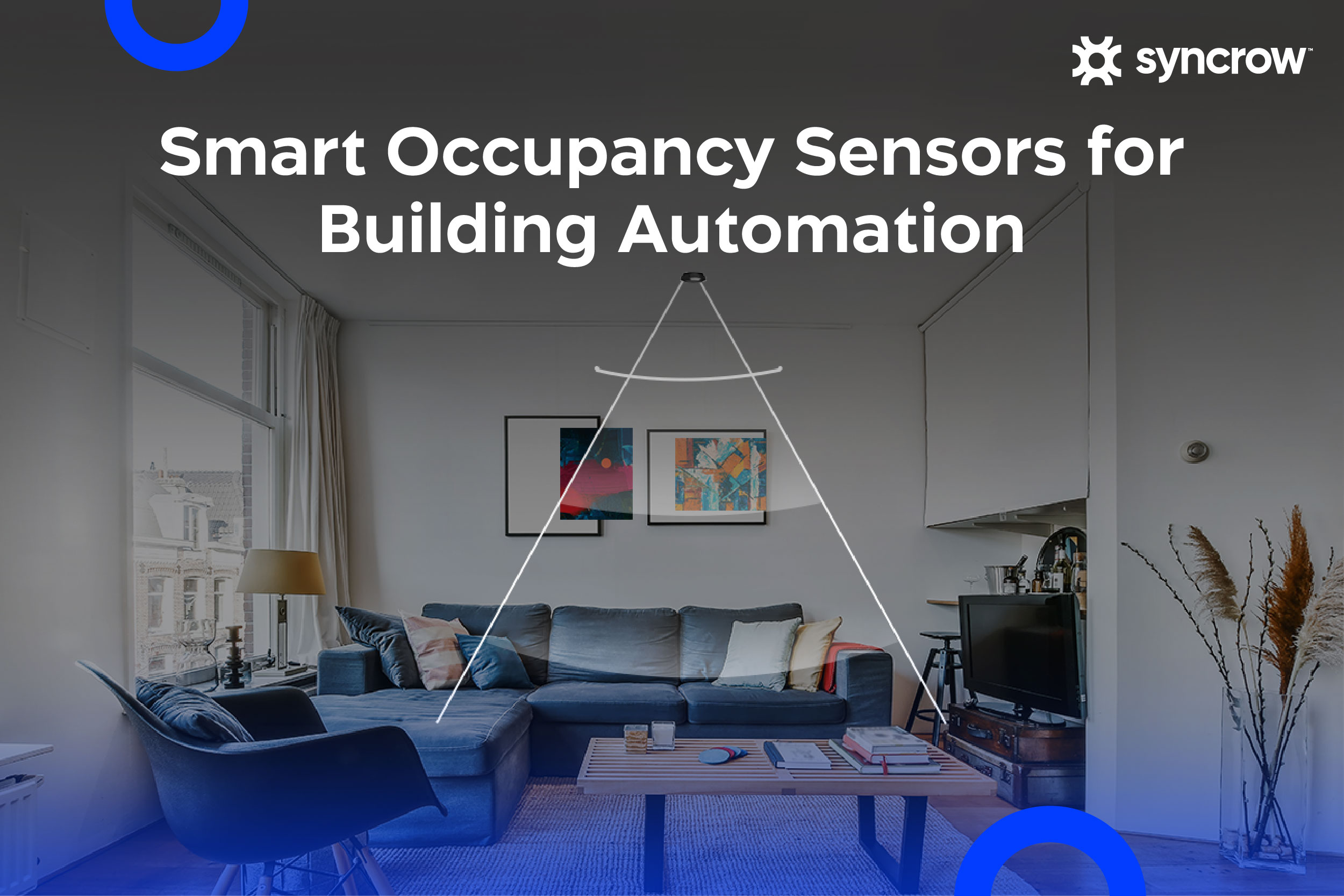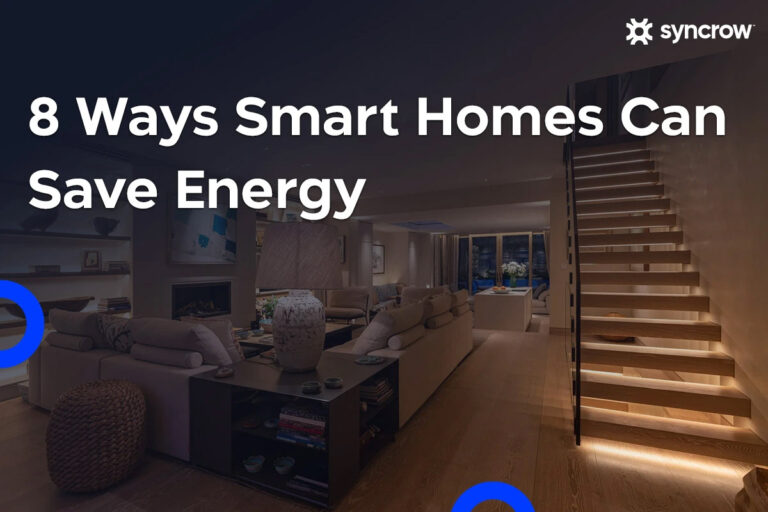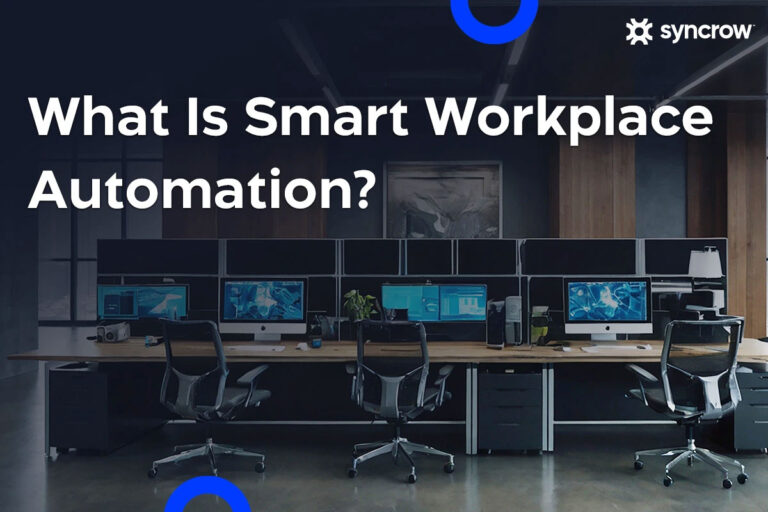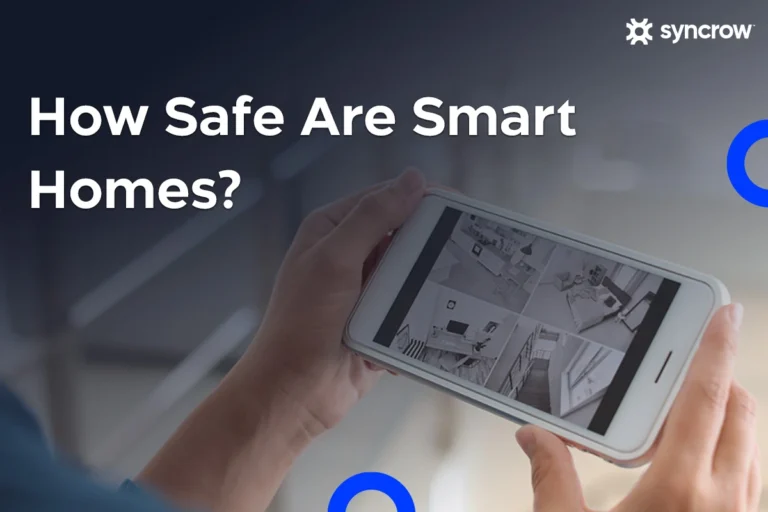Smart building automation relies on one core capability above anything else: Knowing when people are occupying a space. The smarter the sensor, the better the building can detect, respond, and optimize daily operations. This is where the new generation of smart occupancy sensors becomes essential, giving facility managers accurate real-time visibility, tighter control over energy use, and a foundation for data-driven decisions.
Today’s devices go far beyond basic motion detectors. They work across lights, HVAC, ventilation, and security systems, helping businesses automate routine tasks, reduce energy waste, and run responsive environments that adapt moment by moment.
Below is a complete look at what they are, how they work, and what to consider when choosing the right solution for a modern, IoT-powered building.
What Is a Smart Occupancy Sensor?
A smart occupancy sensor is a device designed to detect whether a person is present in a room or zone, then communicate that information to other systems. This type of sensor is part of a broader IoT ecosystem, where devices share real-time data and trigger actions automatically.
Unlike traditional devices, a modern occupancy sensor uses IoT connectivity to share status updates continuously. Because it is designed to detect movement, body heat, or even micro-motion, the sensor can:
- Turn the lighting on and off automatically
- Adjust HVAC and ventilation based on use
- Monitor indoor air quality based on pollution levels
- Support analytics by generating occupancy data
- Help facilities optimize resource allocation
- Detect human presence without capturing identifying information
In short, these devices make buildings smarter by reacting instantly to the person using a workspace (or any other space) and how that space changes throughout the day.
Technologies Used in Occupancy Sensors
Modern occupancy sensors rely on different sensing technologies, each with unique strengths. Understanding these differences helps you choose the right sensor for light automation, HVAC, ventilation control, and space analytics.
1. PIR (Passive Infrared) Sensors
How they work:
A PIR sensor uses a pyroelectric element to measure changes in infrared radiation emitted by warm bodies. When a person moves across their field of view, the heat pattern shifts, and the sensor recognizes an event.
Advantages:
- Extremely low power consumption (can run for years on batteries)
- Very stable for indoor, enclosed areas
- Low false triggers compared to ultrasonic
Limitations:
- Requires line-of-sight
- Cannot detect micro-movements (typing, reading) at long distances
- Ineffective in areas with temperatures close to human body levels (poor thermal contrast)
Best for:
Private offices, hotel rooms, storage rooms, and meeting rooms with predictable layouts.
2. Ultrasonic Sensors
How they work:
The sensor sends high-frequency sound waves and listens for changes in reflected patterns. Any movement (small or large) alters the returning frequency, allowing it to detect presence.
Advantages:
- Excellent at detecting micro-movements
- Good coverage in irregular rooms with many obstacles
- Does not require line-of-sight
Limitations:
- Prone to false triggers from airflow, vibrations, or thin walls
- Slightly higher power consumption
- Requires careful placement to avoid echoes
Best for:
Open-plan offices, conference rooms, and areas with cubicles or partitions.
3. Microwave / Radar Sensors
How they work:
These sensors emit microwave signals (similar to radar) and measure changes in frequency via the Doppler effect. Any moving object shifts the frequency, allowing the sensor to react.
Advantages:
- Highest sensitivity among major technologies
- Can detect motion through light materials like glass or thin drywall
- Covers large spaces with fewer devices
- Suitable for long corridors and wide rooms
Limitations:
- Over-sensitivity may cause false triggers
- Can detect motion beyond the intended zone if not configured properly
- Generally higher cost
Best for:
Large commercial floors, long hallways, parking structures, and high-ceiling areas.
4. Dual-Technology Sensors (PIR + Ultrasonic or PIR + Microwave)
How they work:
These units combine two technologies and require both to confirm occupancy before triggering. For example:
- PIR detects body heat
- Ultrasonic confirms movement
Advantages:
- Significant reduction in false triggers
- Reliable in environments with both small and large movements
- Better accuracy for lights and HVAC automation
Limitations:
- More expensive
- Higher power draw
- Requires proper calibration for each room type
Best for:
Shared workspaces, open areas where accuracy is critical, and energy-focused buildings.
5. Time-of-Flight (ToF) Sensors
How they work:
ToF sensors emit pulses of light (near-infrared) and measure how long photons take to return. This allows them to measure distance precisely and understand when a human form enters the space.
Advantages:
- High accuracy for presence vs. motion
- Good for detecting stationary occupants
- Works in varying light conditions
- Supports people-counting features without identity capture (GDPR-friendly)
Limitations:
- More expensive
- Shorter range compared to microwave
Best for:
Meeting rooms, desks, and focused zones where knowing if a person is still there matters.
6. IoT-Enhanced Wireless Sensors (Zigbee, Wi-Fi)
How they work:
The sensing element (PIR, ultrasonic, etc.) is combined with wireless modules to communicate in real-time to an IoT platform.
Advantages:
- Easy deployment with no rewiring
- Can integrate directly with smart building platforms
- Scalable across multi-floor or multi-building campuses
- Encrypted communication supports secure operations
Limitations:
- Requires stable wireless infrastructure
- Some protocols have limited device counts per gateway
Best for:
Modern smart buildings, retrofits, and efficient upgrades.
Types of Smart Occupancy Sensors
Occupancy sensors come in form factors tailored for different spaces and architectural needs:
- Ceiling-mounted sensors for wide coverage
- Wall-mounted sensors for corridors and entrances
- Desk or seat-level sensors for workspace management
- Standalone presence sensor units for tight areas
- Light-specific sensors
- HVAC-focused sensors that prioritize air quality and occupant comfort
Each type functions as a device designed to detect and adapt to human movement or presence, but with coverage patterns optimized for the surrounding environment.
What Are the Different Uses of Smart Occupancy Sensors?
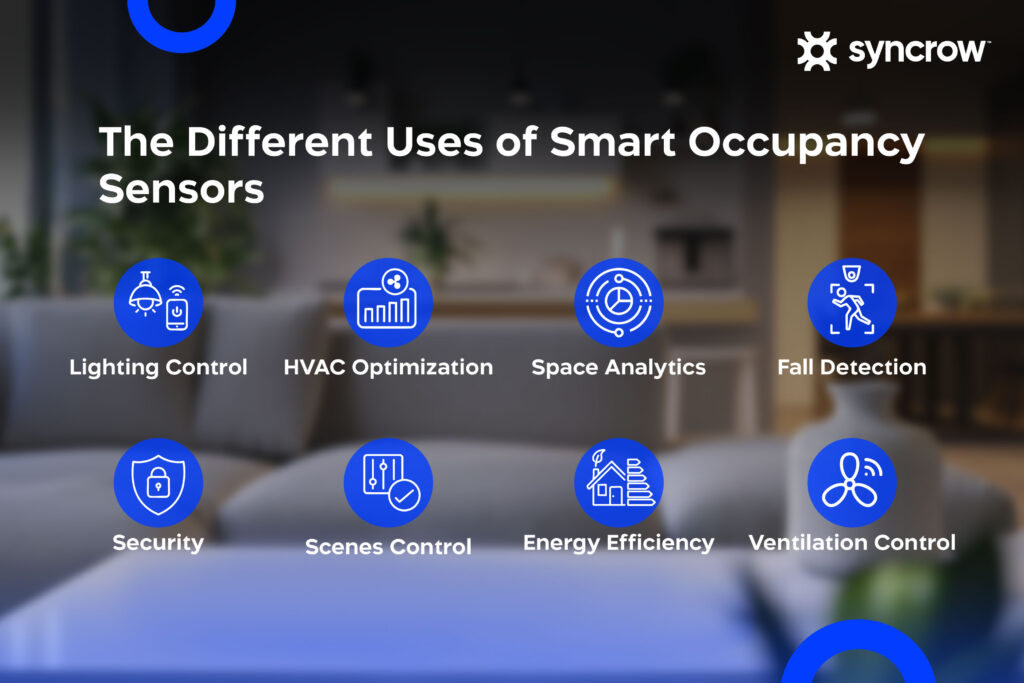
1. Intelligent Lighting Control
Occupancy sensors adjust lighting levels the moment they detect someone entering or leaving a space. This ensures the system operates only when needed, improving energy efficiency and reducing unnecessary runtime.
- Automatically switches or dims lighting based on real-time occupancy
- Ideal for hallways, conference rooms, storage areas, and shared offices
- Helps reduce energy consumption and cut long-term costs
2. HVAC Optimization
By utilizing accurate real-time occupancy data, these sensors allow temperature and airflow settings to adapt dynamically. Rooms are conditioned only when occupied, improving comfort and optimizing energy use.
- Adjusts heating and cooling based on actual room occupancy
- Supports healthier comfort levels without overconditioning spaces
- Reduces operational costs by preventing unnecessary HVAC cycles
3. Air Purification and Smart Ventilation Control
Ventilation systems can ramp up or down depending on how many people the sensor detects in a specific area. This helps maintain air quality while avoiding wasteful overventilation in empty rooms.
- Modulates airflow according to occupancy changes
- Improves indoor comfort and overall environmental quality
- Prevents excessive ventilation that raises energy consumption
4. People Counting & Space Utilization Analytics
Modern sensors can go beyond simple motion detection and estimate how many people are inside a room or zone. This helps facility teams understand how spaces are used and enhances resource allocation across the building.
- Tracks how often rooms or workspaces are occupied
- Provides occupancy insights for improving space planning
- Feeds people-count data into AC and lighting systems for smarter automation
5. Security & After-Hours Monitoring
By using occupancy sensors to detect unexpected movement in restricted or unoccupied zones, buildings strengthen their security posture without requiring full camera systems.
- Triggers alerts when movement is detected in off-hours
- Helps identify unauthorized access in sensitive areas
- Works as a silent layer of security across corridors, storerooms, and offices
6. Automated Workflows & Scene Control
When integrated with an IoT platform, occupancy sensors can trigger multi-step automation routines. This allows buildings to respond instantly to how occupants use the space.
- Activates predefined lighting, AC, or shading “scenes” when someone enters
- Streamlines meeting room or hotel room preparation
- Helps automate repetitive tasks across multiple systems simultaneously
7. Improving Energy Efficiency in Smart Buildings
A smart building depends on accurate occupancy information to operate efficiently. These sensors ensure energy is directed where it’s needed and minimized where it’s not.
- Aligns AC runtimes with actual usage
- Helps save energy by eliminating waste in vacant spaces
- Supports long-term sustainability goals by optimizing building-wide energy use
8. Fall Detection in Healthcare Facilities
In healthcare environments, smart occupancy sensors can help identify abnormal patterns of movement that may indicate a fall. By monitoring sudden changes in motion or inactivity, these systems support faster response times and enhance patient safety without relying on intrusive monitoring.
- Detects unusual movement patterns that may signal a fall
- Alerts staff immediately for rapid assistance
- Enhances safety in patient rooms, long-term care units, and senior living spaces
Factors to Consider When Choosing Smart Occupancy Sensors
When selecting a smart presence sensor for your building, evaluate more than just the sensor range. A high-quality solution should support your operational goals and future expansion.
1. Detection Method & Accuracy
Choose between PIR, ultrasonic, microwave, or dual-tech depending on room size, furniture layout, and expected motion levels.
2. Range & Field of View
Wide, unobstructed spaces may need ceiling-mounted units, while focused areas might use narrow-beam wall sensors.
3. Power Requirements
Look for low-power consumption devices, especially if deploying at scale.
4. Privacy & GDPR Compliance
If the building is in a regulated region, ensure the sensor technology or the supporting IoT platform aligns with GDPR requirements and does not store identifiable data.
5. Durability & Build Quality
The sensor should handle temperature variations, dust, and long-duty cycles.
6. Smart Compatibility & IoT Platform Support (Important)
This is where many solutions fail. For long-term scalability, the occupancy sensor must:
- Integrate with the IoT platform you are using
- Support widely-used wireless protocols
- Provide seamless integration with AC and analytics systems
- Fit into a larger IoT ecosystem
- Connect seamlessly with energy management platforms
Syncrow for Smart Building Automation
At Syncrow, we build technology that makes buildings more responsive, efficient, and intelligent. Our IoT platform and suite of smart devices – covering AC, occupancy, and more – help property developers and facility managers streamline daily operations while improving comfort for occupants.
With full support for connectivity, device interoperability, and seamless integration, Syncrow gives you a scalable system where every sensor plays a meaningful role. Your building becomes easier to manage, more efficient to operate, and ready for the future.
When you’re ready to build a smarter environment – one where every sensor works in harmony – Syncrow gives you the tools to get there.
Looking to upgrade your building with smart occupancy sensors?
Let Syncrow help you design a system that fits your needs today and scales for tomorrow.

